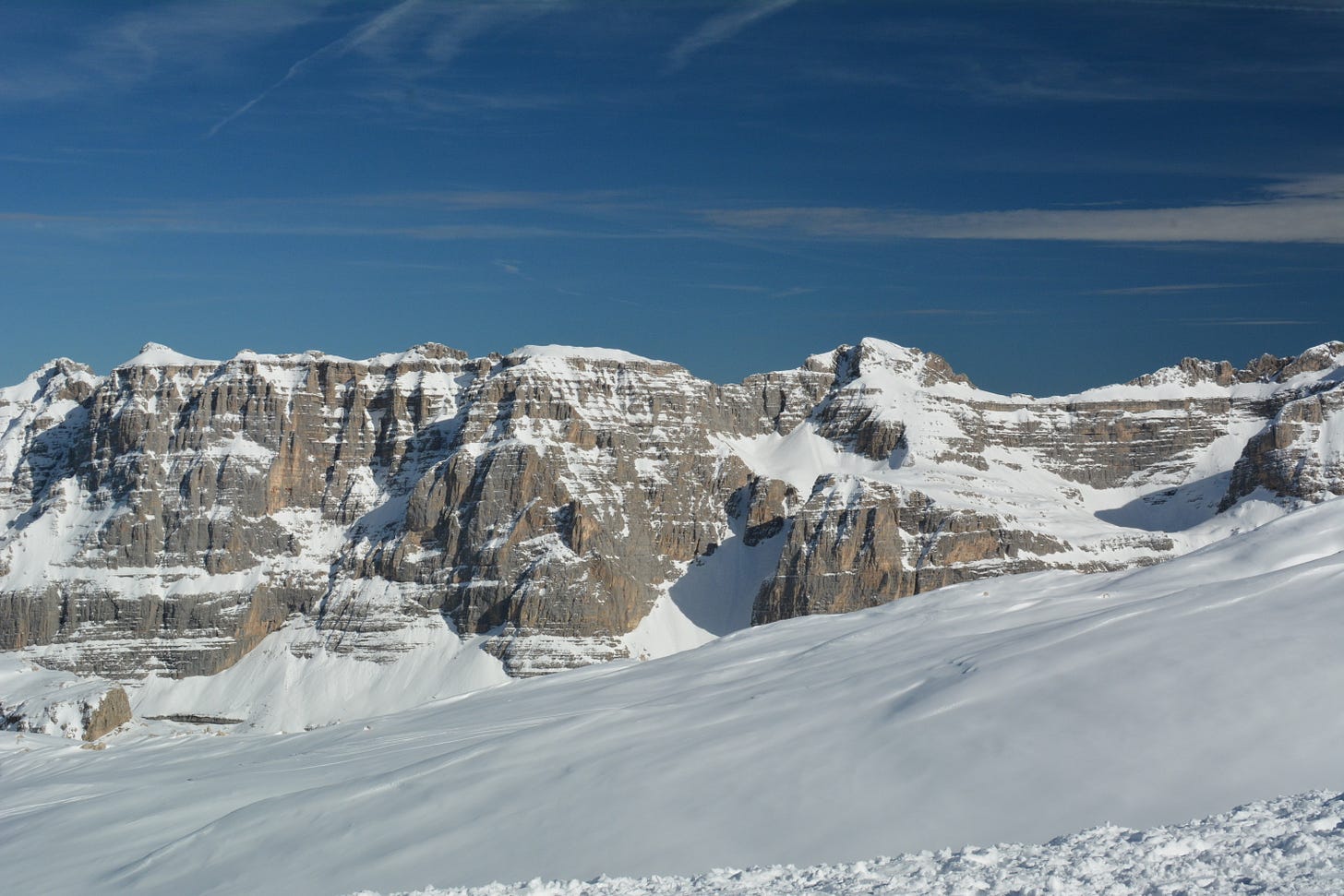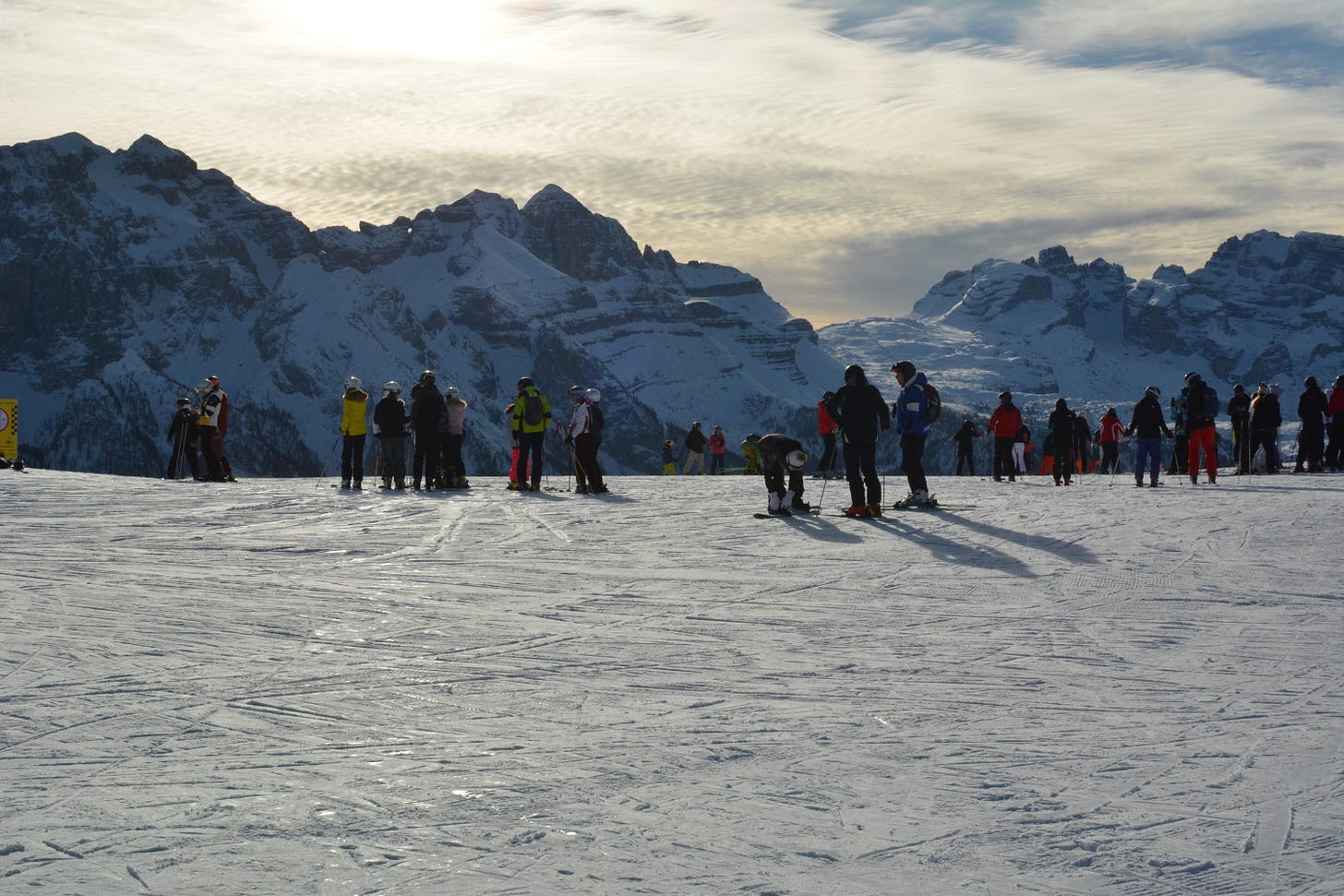Five years ago, I was given a ski jacket with a warm liner for Christmas. Over the course of five skiing holidays, I have worn the warm liner exactly once.
So what you might ask? Well, the buyer of the gift has been skiing for as long as I have – and still thinks of it as an activity where -10C is normal. But it’s not any more.
I just got back from a week’s skiing. The first few days were fine. Mostly between -2C and +5C. But then the warmth came: 10C or more in the sun, slushy snow, sweating when you have to walk on flat areas. This wasn’t a one off either.
The signs of warming Alps are everywhere. In the 90s and 00s I remember driving into the mountains, watching out for the first signs of snow. Usually they would appear in low valleys. By the time you got to the resort at around 1500m, the snow would be metres deep. Now, it appears at the resort if you’re lucky. If you’re unlucky, the slopes running down to the resort are the only places with snow on them. Once blinding white mountainsides are a sad, drab brown.
It gets worse. We used to ski at Easter which was often a bit warm. Then it got so warm that we moved to the more expensive February half term. Now, that’s too warm too. This year it was often above freezing at 2300m in early Feb. Last year it was 15C on slopes at this level and sometimes above freezing at 3000m. The year before, the best recent year, it still rained at 1800m.
I learned to ski as a child in the US, often on tiny little hills with a couple of runs on the and rope tows. Thanks to then the brutal Pennsylvania winters these were snow-covered despite having no real altitude. Once a year we’d go up to Vermont for bigger slopes where it sometimes got down to -30C. Frostbite was a real worry, an idea that now seems laughably quaint. When we moved back to the UK, we started going to the Alps, which were clement in comparison, but still properly cold.
Skiing gets a bad rap on social media. It’s the sport people love to hate, imagining it to be full of Tobys and Sophies necking Jägerbombs in Val d'Isère. And, frankly, I don’t expect you to care about skiing per se. But you might care that slushy ski slopes are sign of everything from glacial retreat to summer droughts.
You might care that mountain communities will lose a huge chunk of their income. And you might reflect that, not everyone who skis is a City banker and in cold countries, it’s something ordinary people do, just as people who live on the Cornish coast are more likely to surf.
The resorts are doing their best. Snow-making has improved hugely, glaciers are wrapped in the summer, lower runs can be abandoned. But I’m not sure this will help much in the medium term. A much cited study by the Institute for Snow and Avalanche Research, suggests the Alps could lose up to 70% of their snow cover by 2100, if global temperatures rise by 2.7C (the business as usual scenario). If we can keep that rise below 2C the fall in snow cover will be limited to 30%. But we’re already at 2C, so it’s hard to be optimistic.
What’s more, even if there is decent snow, skiing in 9C isn’t very nice. The snow is wet, sticky and slow. The skiing is hot and sweaty, it doesn’t feel right.
Of course, skiing will hang on in places. The very high resorts. High-latitude mountains. Although in both cases it’s constrained - by altitude (much above 3500m you risk altitude sickness) and daylight (very far north and you have short winter days). The sweet spot is (or was) the Alps and the Rockies.
I dunno, perhaps in 40 years’ time, you’ll be limited to the peaks of northern British Columbia, south-eastern Alaska and a few ranges in Siberia if Russia rejoins the world (the Southern Andes just aren’t that high).
I’d like to be more cheerful. But global warming seems to speeding up, not slowing down. When I think about the changes I’ve seen in the Alps in the last 20 years, I’m not sure skiing will exist as a mass participation sport in 2044.





